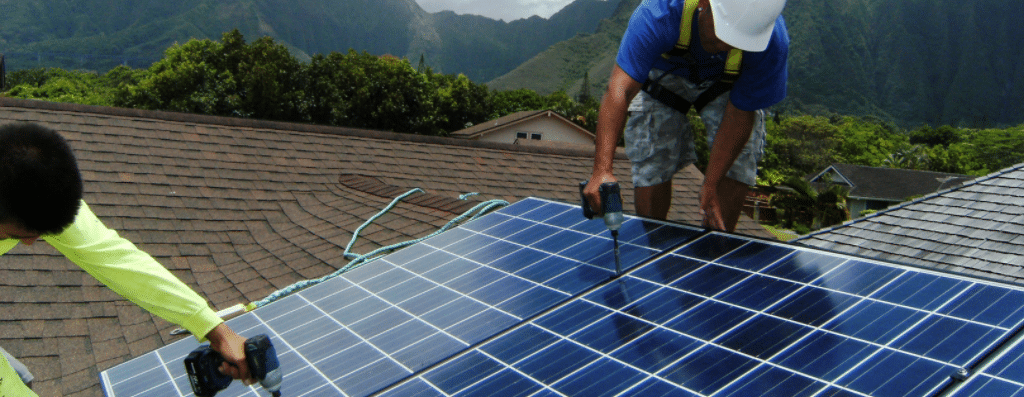To say Hawaiians love solar is like saying the Pacific Ocean is big. And since the state has pledged to be powered by 100% clean energy by 2045, its popularity is, generally speaking, a plus.
But since the state’s utility Hawaiian Electric Co. (HECO) eliminated net-metering, the state has struggled to integrate solar into its electricity mix. HECO’s two interim programs – a “grid-supply” option with a cap and a customer self-supply program (CSS). Under the new system, homeowners can install solar on the condition that it does not export electricity back to the grid.
To maintain a system of self-supply, however, homeowners need access to batteries – and on the island of Oahu at least, getting a permit for a battery system is lagging far behind the solar systems the utility is approving.
By last week, 420 residential rooftop solar systems attached to batteries were ready to be installed as soon as the battery systems are given the go-head. Unfortunately, the Honolulu Department of Planning and Permitting (DPP) has given building permits to only 33, citing safety concerns.
It may seem odd to outsiders that the state could virtually mandate self-supply but would be so slow to approve building permits for batteries. Colin Yost, principal at Honolulu-based solar company RevoluSun, said no one is intentionally trying to limit solar installations.
“This isn’t a case of speaking with a forked tongue – there are two completely distinct heads involved: the Hawaii Public Utilities Commission (PUC), a state agency, and the DPP, a county agency,” Yost said. “There’s no organizational overlap or natural coordination between them.”
Yost, also a board member for the Hawaiian Solar Energy Association (HSEA), said the group believes the PUC moved too quickly to eliminate net metering when there was no urgent grid reliability, safety or management reasons for the abrupt transition it mandated in October 2015.
Instead, HECO relied on the idea that solar customers were unfairly shifting millions of dollars in costs to non-solar customers to justify its decision, Yost said.
As pv magazine consistently notes, the argument is undeniably false, a chimera perpetrated by utilities afraid of losing revenues to consumers who supply their own energy. At least 16 state-level studies and two national studies have proven the contention false, but like a zombie on The Walking Dead, it continues to live on in the fevered imagination of utility executives.
Yost said the rapid shift made it impossible for manufacturers, consumers, DPP and the industry to start designing and installing solar systems with batteries on such short notice – and that’s the reason for the lag between approved systems and battery permits.
“It’s only in the past month that battery supply, permitting, cost and design are all coming together to create a viable market – but it’s still in its infancy and will need time to grow,” Yost said. “Hawaii’s market is also not large enough to drive product innovation, so it’s really just Hawaii’s dumb luck that companies like Tesla exist and are willing to push the industry forward.”
In response to more than a year of lobbying by HSEA and the solar industry, HECO’s made at least 20 MW of capacity available under its Customer Grid Supply (CGS) program, allowing as many as 2,800 rooftop PV systems to be installed.
“Adding capacity to the Grid-Supply program has been helpful,” Yost said “That action, plus the resolution of many of the regulatory and equipment supply hurdles faced by the Self-Supply program, makes [the industry] feel like there really is a light at the end of the tunnel.”
This content is protected by copyright and may not be reused. If you want to cooperate with us and would like to reuse some of our content, please contact: editors@pv-magazine.com.








By submitting this form you agree to pv magazine using your data for the purposes of publishing your comment.
Your personal data will only be disclosed or otherwise transmitted to third parties for the purposes of spam filtering or if this is necessary for technical maintenance of the website. Any other transfer to third parties will not take place unless this is justified on the basis of applicable data protection regulations or if pv magazine is legally obliged to do so.
You may revoke this consent at any time with effect for the future, in which case your personal data will be deleted immediately. Otherwise, your data will be deleted if pv magazine has processed your request or the purpose of data storage is fulfilled.
Further information on data privacy can be found in our Data Protection Policy.